Forging Solutions: Procurement Challenges in Metal Industry

Forging Solutions: Procurement Challenges in Metal Industry
Amidst global supply chain disruptions, market volatility, and raw material shortages, the metal and steel industry looks at a challenging procurement scenario. As per McKinsey1, steel demand outlooks have been revised from 2.7 to 1.2% for 2022 and 2023, respectively.
Steel producers should optimize their procurement sourcing strategies to secure the best quality and price while minimizing over- and under-stocking risks. One of the ways to achieve this is by using MRO procurement software, which can help streamline the purchasing process of maintenance, repair, and operations (MRO) items.
How? Continue reading to understand how a robust procurement management system can help the metal and steel industry navigate procurement challenges.
Maximize Your Potential with a Procurement Software
Procurement software is a cloud-based solution with features such as real-time collaboration tools and predictive analytics to monitor supply chain risks and opportunities.
Businesses use a procurement management system to centralize and automate the procurement process on a single platform, from sourcing to payment.
Here’s how procurement software can help your metal and steel companies navigate procurement challenges:
- A procurement management system can centralize and automate the procurement process — from sourcing to payment — on a single platform. This can reduce manual errors, save time and resources, and improve your visibility and control over your supply chain.
- It can optimize your procurement sourcing strategies to secure the best quality and price for the inputs while minimizing the risks of overstocking or understocking. Plus, it can streamline the purchasing process of MRO items and prevent duplicate sourcing, lowering inventory costs.
- Procurement software can enhance your operational efficiency and make your supply chain resilient by enabling faster and more flexible responses to changing market conditions, customer demands, and regulatory requirements.
- Your procurement software can provide data-driven insights, helping you identify the best suppliers and negotiate the best deals. Plus, features like advanced text analytics, digital simulations, and optical character recognition can help you improve contract compliance.
Conclusion
Moglix can help you with these benefits by providing various solutions tailored to your needs and challenges. Its MRO procurement software is a cloud-based platform that enables you to streamline the purchasing process of MRO items. It helps reduce costs, consolidate the vendor base, and maintain consistent procurement KPIs across sites.
Recently, Moglix enabled the procurement of structural steel, safety goods, and electricals & cables for the Central Vista Project. It consolidated 30 vendors, reduced the turnaround time to 7 days, and saved 10% in material cost by enabling the source-to-site supply chain for 90% of the required safety groups.
If you want to explore how Moglix can help you navigate the procurement challenges in the metal and steel industry, you can book a meeting with us here.
The Power of Data Analytics in Inventory Optimization

The Power of Data Analytics in Inventory Optimization
Inventory is one priciest asset for any business, usually costing between 7%–16%, including the weighted average cost of capital. This means you have the room to optimize inventory to avoid unnecessary expenses and improve profitability. But how can you do that effectively?
The answer lies in data analytics.
It includes transforming raw data into insights that help businesses make better decisions. Applying data analytics to inventory management can enhance your demand forecasting, help identify trends and patterns, and optimize inventory levels across the supply chain.
How? In this blog, we will explore how data analytics can help businesses achieve inventory optimization, one of the key objectives of MRO procurement.
Potential of Data Analytics in Inventory Optimization
As per McKinsey1, applying data analytics to inventory management can reduce lost sales by 65%, due to improved data forecasting abilities.
Some other benefits are as follows:
- Optimizing inventory levels can reduce the amount of capital tied up in inventory, as well as the costs of storage, handling insurance, and obsolescence, thereby reducing inventory costs by 30–50%2.
- Businesses can also prevent stock outs by using real-time data and analytics to monitor inventory availability, demand fluctuations, and supply chain disruptions.
Data visualization and optimization techniques can help you reduce waste, increase productivity, enhance quality, and foster innovation. This can give you a competitive edge, increase customer satisfaction, and achieve higher profitability.
Optimizing Supply Chain using Data
Supply chain solutions providers use data analytics by offering end-to-end services including data collection, integration, analysis, visualization, and optimization. Here’s how these techniques can help your business:
- Demand Forecasting: Businesses can use advanced analytics and machine learning to generate more accurate and granular forecasts for the short-term demand of products.
- Identify Trends: By leveraging data visualization and predictive analytics, you can identify trends in inventory performance, such as variability, seasonality, excess, and obsolescence. This can help you improve inventory planning, allocation, and replenishment strategies while reducing waste and inefficiencies.
- Optimize Inventory: You can also use data science and optimization techniques to determine the optimal levels for each product, location, and channel. This can help you minimize inventory holding costs, maximize inventory turnover, and enhance customer satisfaction.
Conclusion
Over 80% supply chain professionals believe analytics will play an important role in reducing supply chain costs. That’s why many businesses rely on supply chain solutions providers such as Moglix that can help you achieve significant savings and efficiencies through digital transformation of their indirect procurement.
For instance, Moglix enabled an FMCG conglomerate to unlock 4% savings on total cost of ownership by introducing catalog-based buying and streamlining their procurement process. If you want to learn more about how Moglix can help you leverage data analytics for inventory optimization, schedule a demo with us today.
Corporate Gifting 101: A Quick Guide

Corporate Gifting 101: A Quick Guide
The corporate gifting market in India is worth $2.5 billion, and is increasing at a rate of 200% annually. This surge in demand proves that corporate gifting works in encouraging repeat business, strengthening client relations, and retaining employees.
Corporate gifting is the act of touching base with employees, clients, or prospects viaa gift such as a personalized piece of clothing, or an eGift card. However, it’s not as simple as it sounds because a lot goes behind the scenes — budgeting, brainstorming, sourcing, and delivery.
So, how can you successfully leverage corporate gifting to drive these results? Continue reading as we discuss this and share the latest corporate gifting trends.
Planning for a Successful Corporate Gifting Program?
The first step in planning your corporate gifting program is determining the purpose of the program. Start by asking yourself these questions:
- What are your gifting objectives?
- What type of items do you want to gift?
- Is it budget-friendly or eco-friendly?
- What kind of story do you want your corporate gift boxes to tell?
- How can you make a long-lasting impression?
Once you have answered these questions, start with deciding on the budget and choosing the perfect gift.
Budgeting
To establish the budget for corporate gifts, you need to start by figuring out how much you can afford to spend. This depends on various factors such as:
- Your company’s size
- Your company’s total sales
- The number of people you intend to give gifts to
- Delivery locations — pan-India, international, or limited to one state?
Also, as a general rule of thumb, you should always keep some of your budget aside to cover unforeseen expenses. It’s always better to have too much than not enough because once the results of a gift campaign start to show, the lists of recipients tend to grow.
Sourcing
To help you make a more informed decision, here are some factors you should consider when choosing your corporate gifting partner:
- Wide range of high-quality gift options
- Premium quality gifts ensured.
- Cater to various budget ranges
- Bespoke tailor made gifts
- Eco-friendly gift options available
- Ease of Ordering
- Place orders for multiple recipients at once
- On time every time, anywhere in India
- Customized and personalised packaging
- Track orders, manage deliveries, and generate reports
- Ability to manage last minute order modification
- Responsive customer service to address queries
- Ensuring the protection of personal and corporate data
Last-Mile Delivery
Last-mile delivery refers to shipping items from the closest distribution hub to the final destination, such as the employee’s house. If a present is not delivered on time or in proper condition, the recipient may be disappointed and frustrated, negatively impacting your reputation.
Therefore, when choosing a corporate gifting platform, ensure they offer features such as last-mile delivery and pan-India shipping, among others.
Latest Trends in Corporate Gifting
Data suggests that the top five corporate gifts include gift baskets (48%), company-branded products (46%), and experiences like movies and sporting events (39%)
Here are some more trending gift ideas that you can follow:
- Eco-friendly gifts: You could link your gifting program to your environmental, social, and governance (ESG) practices, as eco-friendly gifts get the company’s positive reviews from over 45% of employees3. Some examples include desk plants, reusable tumblers, and plantable gifts.
- Food gift hampers: Corporate food gift sales crossed over $30 billion recently, indicating a rising trend. Savory and salty treats are also becoming increasingly popular.
- Personalized gifts: Market growth of 400% over the last few years indicates increased popularity of corporate gifts tailored to the recipient’s interests. For example, you can give your employees notebooks personalized with their names.
Plan Corporate Gifting Program with Moglix
Moglix brings to you the ultimate in corporate gifting, with our extensive range of products that cater to every need and budget. From timeless classics to modern innovations, our collection is thoughtfully curated to represent your brand’s distinct identity. With nationwide delivery, no location is out of reach. Make your gesture truly memorable and meaningful, whether it’s a grand statement or a heartfelt token. Choose us for a gifting experience that reflects excellence and care. Plan your corporate gifting program with Moglix to streamline your corporate gifting process.
Unveiling Moglix`s Growth Strategy: Aiming for 30-40% YoY Growth Amidst Plans for Profitability
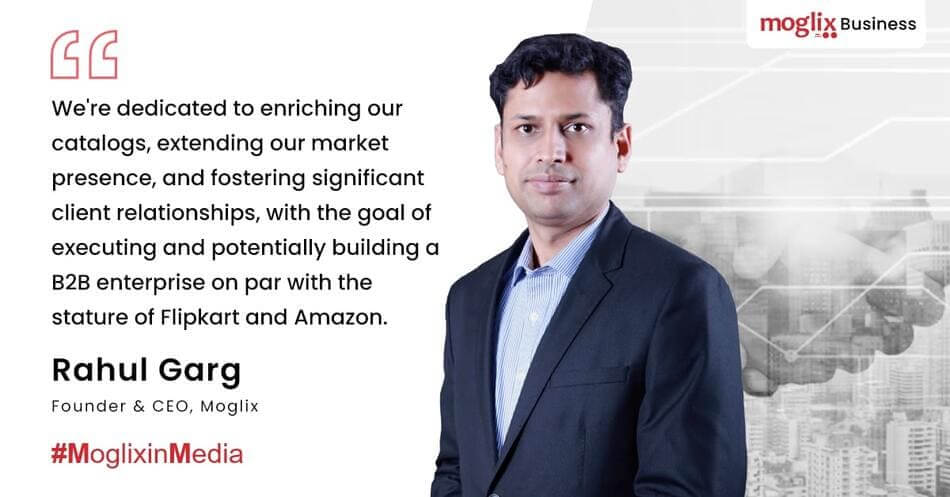
Unveiling Moglix`s Growth Strategy: Aiming for 30-40% YoY Growth Amidst Plans for Profitability
Mr. Rahul Garg (CEO & Founder, Moglix ) unveils Moglix’s Journey Towards Profitability and Exponential Growth in an Exclusive HBL Interaction.
B2B industrial goods e-commerce unicorn Moglix will turn profitable in the next 18 months, even as it eyes growth of 30 to 40 per cent year-on-year for the next few years, said founder Rahul Garg.
We are well capitalised and will become profitable in the next one and a half years. We are in a unique spot in that we have a very good balance sheet, capital in the bank, and an extreme runway,
said Rahul Garg.
Generative AI: Paving the Way for a Data-Driven Business Era
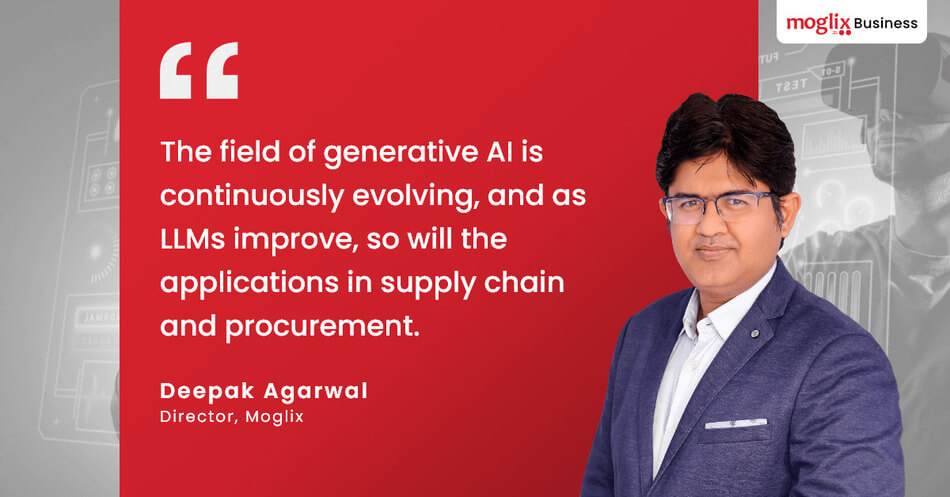
Generative AI: Paving the Way for a Data-Driven Business Era
The rapid rise of Artificial Intelligence (AI), led by generative AI technologies, is unlocking the next productivity frontier. Research estimates claim that generative AI could add the equivalent of $2.6 trillion to $4.4 trillion annually to the global economy.
Generative AI possesses the capability to reshape the nature of work, enhancing the abilities of individual workers by automating certain tasks they perform regularly.
Ideas for Building India`s National Infrastructure Pipeline for Healthcare and Education
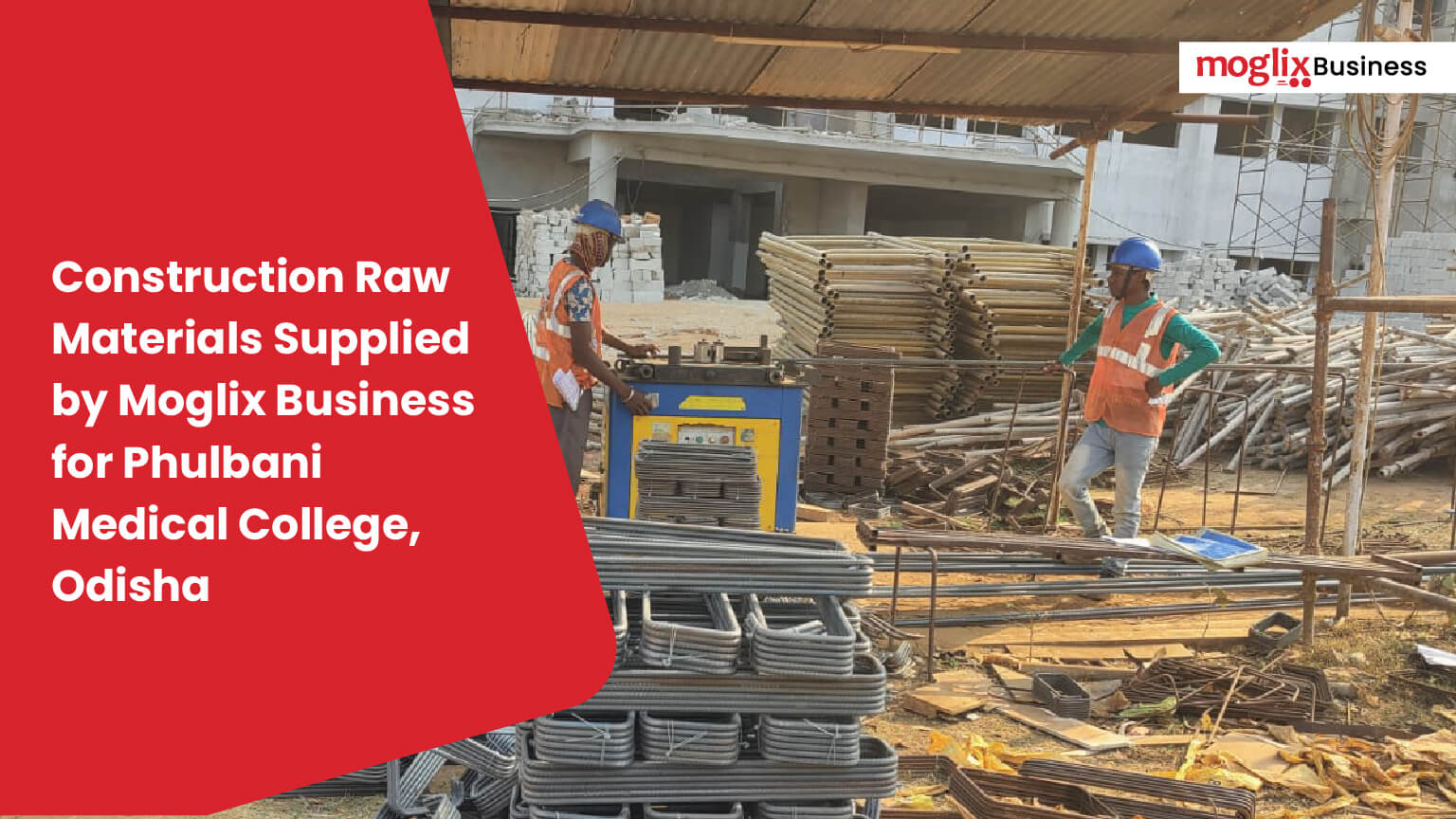
Ideas for Building India`s National Infrastructure Pipeline for Healthcare and Education
What Has Been the Progress in Building India’s Healthcare and Education Infrastructure till Now in 2023?
Healthcare, education, and human capital formation form a triangle. Two achievements speak volumes about the progress in building India’s healthcare and education sectors. First, is India’s major success in its vaccination against COVID19. Second, is the unraveling of the National Education Policy in 2020.
India has made significant strides in healthcare and education. In healthcare, the country has improved access to medical services and witnessed a decline in certain communicable diseases through widespread vaccination campaigns and disease control programs.
Additionally, the government’s efforts to strengthen healthcare infrastructure and expand insurance coverage have positively impacted millions of people.
In education, there has been an increased emphasis on primary education, with a notable rise in enrollment rates and improvements in learning outcomes. The adoption of technology in education has also played a pivotal role in enhancing access to quality education for many, especially in remote areas.
These success stories in healthcare and education have been and will continue to be shaped by the supply chain powering India’s National Infrastructure Pipeline.
What Are the Major Opportunities for EPC Infrastructure Companies in Healthcare and Education Infrastructure Construction?
Opportunities for EPC Infrastructure Companies in Healthcare Infrastructure
There are 57 projects worth INR 31964 crores under conceptualization in India’s healthcare infrastructure sector. Further, there are 33 projects worth INR 17550 crores which are under development and another 326 projects worth INR 131000 crores which are under implementation.
Opportunities for EPC Infrastructure Companies in Education Infrastructure
In the education sector, there are 72 projects worth INR 43157 crores under conceptualization. Another 75 projects worth INR 52119 crores are under development. Moreover, 252 projects worth INR 112000 crores are under implementation.
What Supply Chain Solutions Do EPC Infrastructure Companies Need to Leverage Opportunities in the Healthcare and Education Sectors?
Pre-Engineered Building (PEB) Construction Technology Using Steel and RCC
PEB construction technology can be the answer to India’s requirements of fast healthcare and education infrastructure construction and project completion.
Pre-engineered buildings are structures designed and fabricated off-site, using computer-aided tools and advanced materials. They are highly versatile, cost-effective, and time-efficient solutions for various construction needs.
Components are manufactured to precise specifications, enabling easy assembly on-site, reducing construction time significantly. These buildings offer excellent strength, durability, and can be customized to meet specific requirements.
They find applications in warehouses, factories, commercial spaces, and more. With their sustainable approach, rapid construction, and flexibility, pre-engineered buildings have become a preferred choice for modern construction projects, offering a practical and efficient solution for various industries and applications.
Prefabricated buildings or pre-engineered buildings are custom manufactured as per the engineering drawing. These can be built either with structural steel or reinforced concrete cement (RCC). Once built these can be carried to the project site and deployed quickly.
Exactly how quick? There is a recorded instance wherein a 33-storey apartment with 8 flats of 1000 sq.ft built area each, has been deployed in 12 days sharp.
Imagine the speed of execution of medical healthcare and education infrastructure during crises when we say we need a hospital in no time.
Vendor Consolidation Across Fabrication, Construction Raw Materials, and Indirect Procurement
A significant speed breaker in the construction schedule of medical and educational infrastructure is the fragmented supplier base. A project developer may have to rely on diverse suppliers for construction raw materials, fabrication, electricals & cables, drainage systems, pipeline networks and plumbing.
There are strategic interdependencies among these tasks that call for resource mapping and task mapping. When project developers and sub-contractors work with multiple suppliers, there is a high probability of failures including:
- Product failure
- Process failure
- Systems failure
- Design failure
In the absence of a centralized data governance model, it is difficult for the CTO to map business intelligence. It is difficult for the CPO to track spend analytics. The opacity also impedes the ability of the COO to harmonize these activities as per the critical path method.
This is where vendor consolidation can help EPC project developers act with agility at scale and complete medical and educational infrastructure projects on time.
Vendor consolidation works when a project developer relies on a procurement outsourcing model to manage all its suppliers. There are multiple layers in the full-stack vendor consolidation model for infrastructure projects.
First is systems integration across data sets, devices, and departments. Second, is process integration and collaborative planning. A great example of such collaborative planning is the PM Gati Shakti policy. Third is the creation of a single procurement supply chain analytics dashboard as a single source of truth for the CPO, CTO, COO, and the CFO.
An example of a vendor consolidation success story in healthcare and education infrastructure is that of the Phulbani Medical College in Odisha.
Solar Rooftop Installations for Self Sufficiency in Renewable Energy Production
We have all had our share of lessons in public healthcare from the COVID19 pandemic. One of the lessons learned is the importance of hospitals, nursing homes, and diagnostics centers being self-sufficient for energy.
There are several ways for medical infrastructure projects to tap into renewable energy production. One of the easiest and most affordable ways is to have solar roof top installations.
The Ministry of Renewable Energy, Government of India under its new solar energy policy has rolled out a substantial subsidy to partly finance solar roof top installations. Further, OEMs and component manufacturers are responding to the clarion calls of “Vocal for Local” and “Make in India” with CAPEX investments for the manufacturing of solar PV cells, wafers, and module mounting structures.
Solar rooftop installations can enable medical and educational institutions to become self-reliant in energy production. Schools, colleges, medical colleges, hospitals and universities will be better equipped to provide uninterrupted services, if they are able to solve the problem of intermittent power cuts.
ARC Led Model for Preventive and Breakdown Maintenance
A pain point that continues to plague India’s education and public healthcare sectors is the lack of preventive and breakdown maintenance of infrastructure assets.
Such infrastructure assets include drainage systems, sewage systems, drinking water pipelines, electrical wiring, medical beds, and signages that users may need to navigate from one point to another within the college or hospital premises.
It is in this context that public-private partnership (PPP) models of infrastructure construction can help. PPP models like build-own-operate (BOO) and build-own-operate-transfer (BOOT) can help resolve the challenges of student-dropout in schools and help improve medical outcomes in hospitals.
An annual rate contract led model for indirect procurement can solve the pain points of infrastructure maintenance. An ARC model can bring much needed transparency to line item wise spend analytics and enable on-time replenishment of MRO items as per pre-defined buffer stocks and reordering inventory levels.
The Catalog for EPC Project Developers and Sub-Contractors That Are Building India’s Utilities Infrastructure
Moglix offers a comprehensive catalog of construction raw materials procurement, indirect procurement, and custom manufacturing solutions to EPC project developers and sub-contractors.
To know more about opportunities in the education and healthcare sub-sectors in India’s National Infrastructure Pipeline, download our e-book “Building India: The Infrastructure We Aspire for and the Supply Chain We Need, Second Edition.”
Harnessing Technology for Automotive Supply Chain Optimization
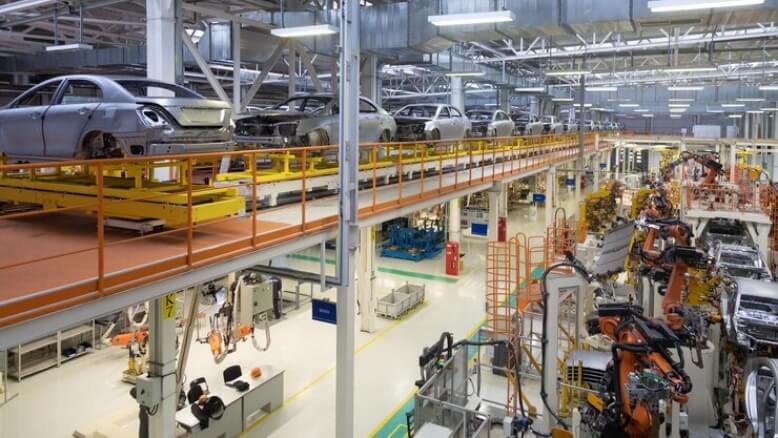
Harnessing Technology for Automotive Supply Chain Optimization
In the aftermath of the COVID-19 pandemic and the Russia-Ukraine war, the global microchip shortage has already garnered a lot of attention, with several automotive companies that follow just-in-time (JIT) manufacturing, having halted their assembly lines and production.
However, it has obscured the fact that the automotive industry involves a complex web of interdependent supplier relations spread across geographies, which entail their own set of challenges, including poor visibility, inventory shortages, and compliance mandates.
Below, we elaborate on the several barriers disrupting the automotive supply chain and how they can be overcome by leveraging technology.
Using Technology to Mitigate Automotive Supply Chain Risks
The ruthless drive to improve speed and efficiency and reduce costs has made the automotive supply chain very fragile. By harnessing the vast goldmine of untapped data by drawing on technology such as machine learning (ML), artificial intelligence (AI), the internet of things (IoT), cloud computing, and blockchain, automobile manufacturers can successfully undertake their MRO supply chain optimization, increasing visibility and streamlining compliance.
#1 Challenge: Lack of Supply Chain MRO Visibility
Poor supply chain visibility is the biggest concern of automotive manufacturers, as it disrupts production schedules, increases lead times, and delays delivery to customers.1 In fact, Toyota’s 40% production cut can be traced back to the parts shortages caused by visibility concerns.2
The lack of supply chain MRO visibility is concerning, as first-tier suppliers tend to have an extended global supplier network, which may lead to manufacturers lacking real-time updates on sub-tier suppliers and third-party vendors. For instance, the diamond-shaped chip supply chain involves Tier 1 component integrators, followed by Tier 2 semiconductor providers and Tier 3 wafer manufacturers.
Solution: Optimize procurement and map the multi-tier supply chain on a centralized platform using MRO software. This will allow for easy identification of any significant delays and disruptions. Additionally, blockchain technology can be leveraged to create an immutable record of all movements and transactions. Vehicle parts can further be fitted with IoT sensors for location and condition-based information, which will facilitate proactive maintenance.
#2 Challenge: Overstocked Inventory
With a vehicle consisting of approximately 30,000 components3, managing inventory has been a tall task. While the JIT method and make-to-order approach ensured better inventory management, the supply chain went for a toss during the pandemic, with manufacturers oscillating between inventory excesses and shortages.
Besides, external factors, such as reputational damage due to manufacturing defects, trade and regulatory issues, and environmental concerns, can lead to a sudden fall in demand, as exemplified by the rise in EV production and the popularity of ridesharing platforms.
Solution: OEMs can deploy AI/ML modeling and predictive analytics to gain insights into market trends, demand patterns, and external risks, to ensure their demand forecasts and production schedules are aligned with purchasing trends. Besides, complete supply chain visibility gained through MRO software will help ensure that products are ethically sourced, preventing reputational damage.
Challenge 3: Compliance Mandates
The automotive industry operates in a highly regulated environment with strict compliance requirements with regard to licenses, safety, fire drills, and environmental audits. Indeed, an Indian automotive manufacturer deals with around 489 mandates4 in a single state without accounting for the regulatory fluidity—some conjecture over 40005 regulatory updates across all government websites. With 80%6 of key personnel lacking compliance understanding, automotive companies risk incurring severe penalties.
Solution: Automotive companies can digitize their compliance management, including meeting sustainability and emission norms, by embracing tech-driven supply chain management solutions and platforms.
Leverage Moglix’s MRO Supply Chain Management Solutions for Enhanced Efficiency
Effective management of maintenance, repair, and operations (MRO) activities is essential to minimize production downtime and create a resilient automotive supply chain. It can enable Indian companies to successfully thrive in Industry 4.0, putting them on the road to doubling the size of the auto industry to Rs. 15 lakh crore by 2024.7
Moglix’s MRO software solutions offer a comprehensive suite of tools such as inventory management, procurement automation, and maintenance planning to achieve end-to-end visibility and improve operational efficiency. Its ability to easily integrate into the company’s enterprise resource planning (ERP) allows for thorough MRO supply chain optimization.Moglix’s prowess is on display through its 85% reduction in the order creation cycle of the world’s largest two-wheeler manufacturer, which suffered from legacy ERP issues, poor data quality, a fragmented supplier base, and a lack of spending visibility. Download the case study or get in touch to learn more.
Digitalizing Procurement: Unlocking Efficiency in the Cement Industry
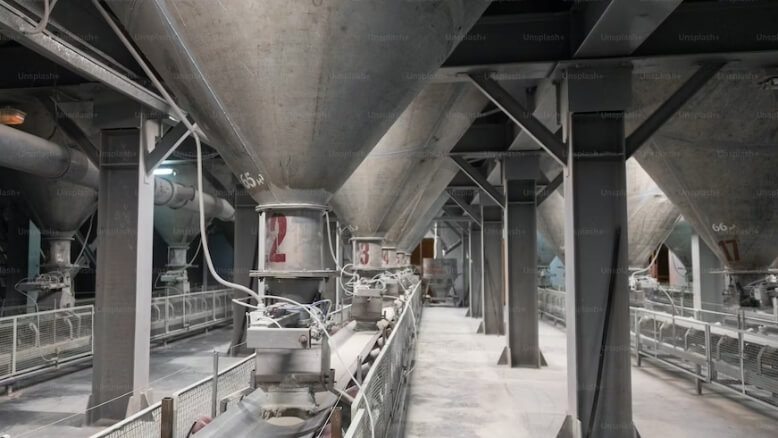
Digitalizing Procurement: Unlocking Efficiency in the Cement Industry
Digital procurement is reshaping the cement industry’s landscape, ringing in a new era of optimization and agility powered by Industry 4.0. Amidst evolving market dynamics, changing consumer demand, and supply chain challenges, cement manufacturers are turning to technology-driven procurement solutions to reduce costs, increase efficiencies, and improve their performance for an added competitive edge.
By digitalizing their supply chain, companies can experience a 20% and 50% reduction in their procurement and supply chain costs, respectively, supplemented with a 10% revenue rise.1Below, we outline the transformative impact of adopting procurement automation on the fortunes of cement companies.
The Power of Automation in Streamlining Procurement Processes
By combining the latest technologies, including artificial intelligence (AI) and the Industrial Internet of Things (IIoT), cement manufacturers can effectively streamline their procurement processes, which are significantly affected by commodity prices, energy consumption, and supplier management. Digital procurement ensures that the cement industry gains holistic visibility into its supply chain, encouraging efficient logistics operations and fostering a resilient, sustainable, and profitable future.
- Enhanced Visibility for Effective Raw Material Procurement
As cement production entails procuring several raw materials, namely limestone, gypsum, coal, and clay, which are spread across diverse geographies and suppliers, ensuring a reliable raw material supply becomes imperative, especially to meet the varying quality standards of different cement types.
To avoid the pitfalls of poor transportation infrastructure, unfavorable weather conditions, and complex government regulations, procurement leaders must adopt digital solutions that enhance supply chain visibility. Real-time tracking can provide end-to-end transparency into the sourcing and delivery processes, ensuring steady flow and enabling production optimization.
2. Improved Inventory Management Down to the Silo
Cement manufacturers are no exception to the uncertainties involved in forecasting supply-demand scenarios. In fact, ensuring there are adequate inventories to meet any sudden demand surge becomes even more significant for companies dealing in both bagged and bulk cement, given the consumer preference for “fresh cement”. Besides, handling coal and the end product’s quality is no easy task.
Procurement optimization assists manufacturers in analyzing their exclusive data sources, including point-of-sale data, stock-outs, pic pack loads, and tracking activities, through predictive analytics. This provides a true picture of customer demand, ensuring better demand forecasting, accurate inventory management, and zero-error predictive plant maintenance.
By embracing procurement solutions such as automated requisitioning, purchase order generation, and invoice processing, cement manufacturers can minimize the scope for manual errors, increase process speed, and undertake better resource allocation.
3. Streamlined Logistics Operations to Meet Demand with Precision
Cement is a high-volume, low-value commodity, which makes handling its logistics complex and costly. Entailing large volumes (cement is bulky) and specialized handling equipment such as bulk carriers and cement tankers, transporting cement efficiently from the manufacturing plant to the distributors becomes essential. Logistics costs also increase when extreme weather disrupts transportation routes and affects cement carriers, thereby requiring maintenance—an even graver concern in remote locations.
IIoT, in conjunction with big data analytics and machine learning, detects operational and logistics inefficiencies by undertaking historical data analysis, thereby enhancing traceability and improving supply chain resilience. By leveraging procurement optimization tools, such as automated tracking and optimized route planning, cement manufacturers can precisely monitor product movement, minimize lead times, and shorten time to market.
4. Seamless Vendor Management for Superior Supplier Relationships
Given the scenario that cement manufacturers must source various kinds of raw materials from different vendors, handling supplier relationships can be daunting. Besides, in the aftermath of the supply chain disruptions caused by the COVID-19 pandemic, maintaining supplier diversity has become even more important. Additionally, with sustainability and ESG compliance becoming all the rage, ensuring that your suppliers are conscious of their footprint makes good business sense.
Cement manufacturers can foster better supplier collaboration and communication by embracing procurement automation solutions. Developing clear metrics for supplier performance evaluation also helps with cost optimization. By leveraging digital technologies, manufacturers can facilitate competitive bidding, ensuring favorable terms are negotiated and a reliable supply chain is established.
Embracing Moglix’s Digital Procurement Solutions to Unleash Higher Efficiency
Adopting digital procurement solutions can truly revolutionize a cement manufacturer’s processes by streamlining its inventory, logistics, and supplier relationships. By harnessing data-driven insights from procurement automation, cement manufacturers can optimize their processes, make informed decisions, and establish agile supply chains.
Moglix’s procurement solutions take this a step further by facilitating the implementation of strategic procurement processes that drive down costs and minimize supply chain risk, as substantiated by the 20% increase in working hour efficiency achieved by a leading cement manufacturer after deploying Moglix’s solutions.
The client had several business challenges, including a fragmented supplier base, non-standardized price and delivery systems, and decentralized platforms, which increased tail-end spending and resulted in data gaps. This not only made it difficult to undertake purchase analytics but also delayed tax filing, causing compliance issues. Moglix automated the procurement processes to deal with the issues of distributed pricing, re-orders, and product duplication, enabling massive cost savings. Download the case study to learn more.
MRO Management Strategies for Manufacturers to Drive Cost Savings
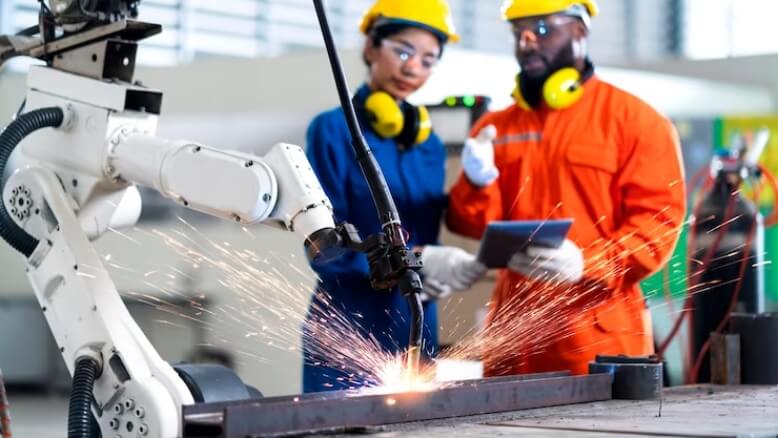
MRO Management Strategies for Manufacturers to Drive Cost Savings
With the majority of procurement initiatives targeted at streamlining direct costs, maintenance, repair, and operation (MRO) costs are often overlooked. 59% of procurement leaders have reported feeling pressured to reduce operational budgets, with another 40% stating the need to improve asset performance.1
This makes reducing unplanned downtime by ensuring all the right parts and equipment are readily available at any given time an absolute necessity. Adopting MRO management strategies can ensure manufacturers proactively deal with procurement risks instead of following reactive maintenance policies.
Top 3 Strategies to Optimize MRO Supply Chain
As manufacturers grapple with several procurement risks, including fragmented supplier base, low spare parts standardization, excessive inventory holding, low catalog usage, and high lead times, reducing indirect costs can feel daunting. Below, we outline the top three MRO procurement strategies that induce cost savings and improve operational efficiency.
Implement Spending Analytics
The global distribution of manufacturing plants paired with a large decentralized user and supplier base entails incurring millions of transactions, which hold massive scope for cost savings. Manufacturers can identify operational inefficiencies within their MRO procurement processes by thoroughly analyzing spending patterns.
Businesses must deploy techniques like ABC analysis to categorize MRO items based on their impact on production and cost to prioritize critical item purchases while reducing costs on lower-value items. To put this into perspective, procurement leaders spend almost 30%2 of their time making manual purchases.
Leveraging data-driven software tools, such as Moglix Solutions, can enable manufacturers to track their spending in real time, acquire actionable insights, and gain alternate product recommendations at better pricing, leading to substantial cost savings.
Introduce Process Transparency
Manufacturing’s MRO supply chain involves several procurement and inventory processes to ensure regular maintenance and replacement of assembly line machines, conveyor belts, and industrial motors. However, such multiple processes also imply multiple error possibilities. For instance, poor visibility into quality and compliance processes can raise procurement costs by 10%.3
Manufacturers must encourage cross-functional collaboration among operations, maintenance, and vendor teams by establishing clear communication channels and documenting detailed procedures for the proper management of MRO procurement processes. By ensuring thorough accessibility and transparency of procedures for all stakeholders, manufacturers can identify and remediate inefficiencies and quality slippage, promote accountability, and enable efficient decision-making, thus contributing to cost savings.
Establish Strong Supplier Relationships
Typically, manufacturers contract with hundreds of vendors to cater to unplanned and unanticipated stockouts and MRO purchases, which forces them to forgo the benefits of high-volume purchases. Hence, strategically consolidating your supplier base and collaborating with them can yield cost benefits. To illustrate, Moglix’s MRO procurement solutions help reduce the supplier base by 80%.4
Manufacturers must establish key performance metrics (KPIs), such as price competitiveness, quality standards, and delivery reliability, to evaluate supplier performance and prune their supplier tail end accordingly. Entering into long-term agreements facilitates better price negotiation and builds trust, which is necessary for cost optimization.
Augment Your MRO Management with Moglix’s Solutions
With Industry 4.0, powered by predictive data analytics, artificial intelligence, and the internet of things, becoming the new normal, harnessing data-driven insights has become intrinsic to streamlining MRO procurement processes. Using a centralized platform, like Moglix’s solutions, can empower manufacturing companies to better detect process deficiencies and maintenance needs, optimize workflows and resource allocation, enhance operational excellence, and gain complete visibility of their MRO supply chain.
To put this into perspective, Moglix helped cut operational costs by 5% for a major EPC company focused on civil and environmental infrastructural development. Faced with the numerous challenges of a fragmented vendor base, exponential inventory holding costs, and poor spending control, it sought to improve process efficiencies by aggregating its remote sites through Moglix’s solutions. Download the case study or get in touch to learn more.
Integrity in Construction: Why Safety and Quality Control is the Bedrock of Infrastructure
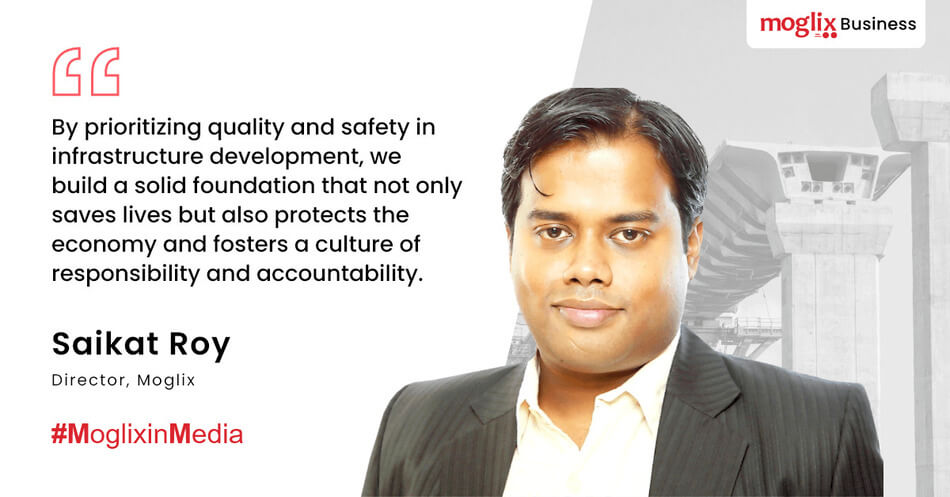
Integrity in Construction: Why Safety and Quality Control is the Bedrock of Infrastructure
Infrastructure is the lifeblood of any thriving economy, and as our country strives to become a US$26 trillion powerhouse, a massive infrastructure overhaul is underway. However, this rapid growth must not come at the cost of quality control and safety measures.
Visualize the potential risks of driving on a bridge that lacks stability or residing in a building plagued with safety hazards. These scenarios are not merely theoretical but there have been unfortunate instances where compromising on infrastructure quality has had real-life implications.
